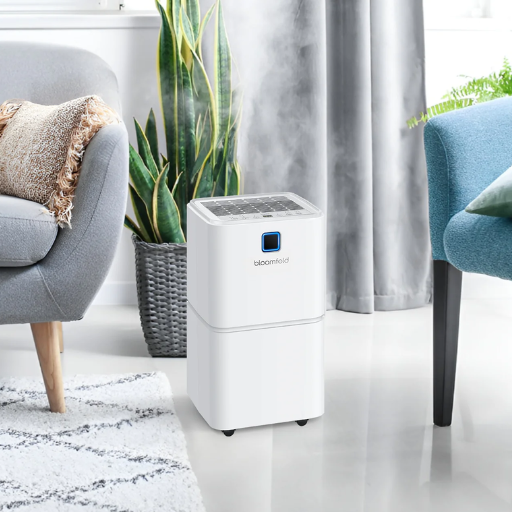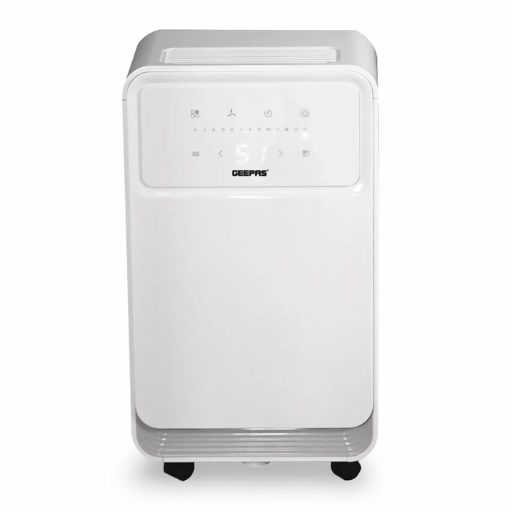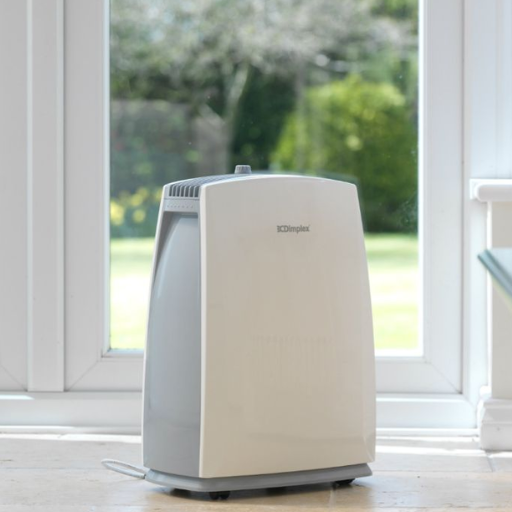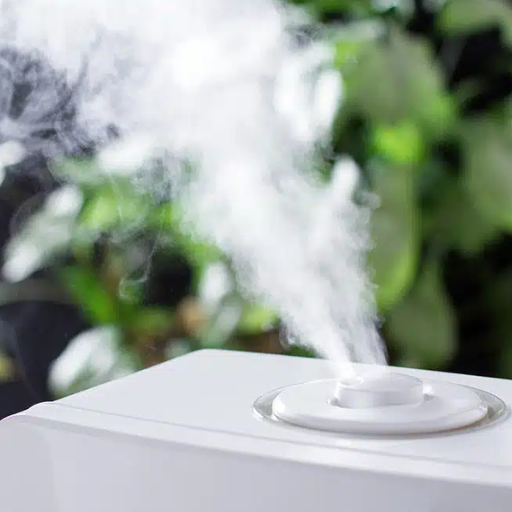A comfortable and healthy home environment is essential for maintaining overall well-being, and one crucial element that often goes unnoticed is humidity control. Excess moisture in the air can lead to a host of issues, from promoting mold growth to exacerbating allergies and respiratory conditions. That’s where a dehumidifier comes into play. This blog post will explore how a dehumidifier can transform your living space, addressing problems like poor air quality, humidity-related health concerns, and even structural damage to your home. Whether you’re curious about its role in improving indoor comfort or extending the lifespan of your furniture and appliances, this article will provide a comprehensive look at why a dehumidifier is a worthy investment. Stay tuned to discover practical tips, key benefits, and how to choose the best dehumidifier for your specific needs.
Why Do You Need a Dehumidifier in Your Home?

Excess moisture in your home can lead to numerous issues, including mold growth, dust mites, and an overall increase in allergens that affect indoor air quality. A dehumidifier helps to maintain an optimal humidity level, making your home more comfortable and healthier to live in. It can also prevent damage to furniture, walls, and flooring caused by excessive dampness, saving you costly repairs in the long run. Additionally, reducing humidity levels can improve the efficiency of your HVAC system, leading to lower energy bills.
How a Dehumidifier Can Help with High Humidity Levels
A dehumidifier offers a practical solution to combat high humidity levels, ensuring a healthier and more comfortable indoor environment. By extracting excess moisture from the air, it minimizes the growth of mold and mildew, which can lead to respiratory issues and allergies. This not only improves indoor air quality but also creates an inhospitable environment for dust mites and other allergens. Dehumidifiers are particularly helpful in spaces like basements, bathrooms, or kitchens, where humidity levels are commonly elevated.
Additionally, controlling humidity reduces the risk of structural damage to your home. Excess moisture can weaken walls, warp wooden furniture, and damage flooring over time, leading to expensive repairs. A well-maintained dehumidifier helps safeguard your home’s integrity by maintaining the ideal humidity range of 30-50%. Furthermore, it enhances the efficiency of air conditioning systems; with less moisture in the air, cooling systems don’t have to work as hard, resulting in energy savings and reduced utility bills.
Combatting Excess Moisture and Dampness in Your Home
Improve Ventilation
Proper ventilation is key to reducing moisture build-up in your home. Use exhaust fans in kitchens and bathrooms, open windows when possible, and consider installing attic vents or air purifiers to enhance airflow.
Control Indoor Humidity Levels
Invest in a reliable hygrometer to monitor indoor humidity, aiming to keep levels between 30-50%. Use dehumidifiers in damp areas like basements and laundry rooms to maintain an ideal balance.
Address Leaks Promptly
Regularly inspect your home for leaks or signs of water damage, particularly around windows, roofs, and plumbing fixtures. Fixing leaks promptly prevents water from seeping into walls and floors, reducing the risk of mold growth.
Use Moisture-Absorbing Materials
Place moisture-absorbing materials such as silica gel packs, charcoal, or moisture absorbers in closets, cabinets, and other enclosed spaces prone to dampness.
Perform Routine Maintenance
Clean gutters and downspouts to prevent water build-up near your foundation, and ensure outdoor drainage systems are directing water away from your home.
By following these practices, you can effectively combat excess moisture and protect your home from damage while fostering a healthier living environment.
Improving Indoor Air Quality and Reducing Allergens
It is critical to reduce allergens within a home and improve the indoor environment by enhancing indoor air quality. Here are some actionable tips:
Enhancing Air Circulation
Opening windows and doors regularly will allow fresh air to come in and circulate within the home. Ensure that exhaust fans in bathrooms and kitchens are put on to reduce humidity, along with odors and pollutants.
Using Air Purifiers
Money spent on air purifiers containing HEPA filters, tailored to pick up dust, pet hair, mold spores, and other allergens will be a worthwhile investment. Position these purifiers in frequently used rooms for maximum efficiency.
Managing Moisture Content
Ensure that indoor humidity does not go below 30% and does not exceed 50%. Inhibiting the growth of mold and dust mites is vital, therefore dehumidifiers or humidifiers will be needed as required.
Regular Cleaning
Using a vacuum cleaner that contains a HEPA filter, carpets and rugs should be vacuumed at least once a week. Dust and other allergens will be removed when curtains and fabric items are washed together with bedding.
Changing Products That Are Not Toxic To Humans
Toxic fragrances that are found in modern-day cleaning products should be avoided and replaced with non-toxic alternatives that do not emit harmful chemicals.
Addressing Dust and Mold
Surfaces need to be cleaned regularly to ensure dust does not build up and trigger allergy attacks. Areas that are prone to be covered with mold need to be cleaned immediately after dusting to prevent possible allergic reactions.
Following these instructions will help you improve the air quality in your home, lower the presence of allergens, and create a more pleasant living environment.
What Are the Benefits of Using a Dehumidifier?

A dehumidifier offers numerous benefits for maintaining a healthy indoor environment. It helps reduce excess moisture, preventing mold growth and dampness that can damage your home and belongings. Additionally, it improves air quality by minimizing dust mites and allergens, making it particularly beneficial for individuals with respiratory issues or allergies. By maintaining optimal humidity levels, a dehumidifier also creates a more comfortable and balanced living space while potentially lowering energy bills by easing the strain on air conditioning systems.
Preventing Mold and Mildew Growth
To prevent mold and mildew growth effectively, it is essential to control indoor humidity levels, ideally keeping them between 30-50%. Proper ventilation is key—using exhaust fans in bathrooms, kitchens, and other moisture-prone areas can significantly reduce dampness. Fixing any leaks in pipes, roofs, or windows promptly will eliminate water sources that mold thrives on. Additionally, cleaning and drying wet areas within 24-48 hours after spills or floods is vital. Using mold-resistant products, such as paints and building materials, can provide an extra layer of protection. Regularly inspecting and maintaining HVAC systems ensures efficient air circulation while minimizing moisture buildup. Together, these measures create a healthier and mold-free indoor environment.
Reducing Musty Odors and Musty Smells
To eliminate musty odors, it is important to deal with the root issues, which usually involve moisture and inadequate airflow. Take steps to locate and eliminate moisture sources, like leaks, damp materials, or condensation. Scrub all of the areas that were affected using natural antifoulants like white vinegar or baking soda, which can help in neutralizing odors and will prevent bacteria and mold from growing. Also, use a dehumidifier to keep humidity indoors lower than 50% and to keep out excess moisture which leads to musty odors. Enhance air circulation by using exhaust fans, window panes, or even incorporating purifiers with activated carbon filters to eliminate the fumes aggravating the noxious odors. Moreover, routinely cleaning window dressings and soft floor coverings like carpets ensures that the living spaces remain fresh over an extended period. Taking these steps will lead to a major improvement to the quality of life for those spending extended periods within this enclosed space.
Helping with Respiratory Issues and Allergy Relief
To alleviate respiratory issues and provide allergy relief, it’s essential to focus on improving air quality in your home. Start by reducing allergens such as dust, pollen, and pet dander through regular cleaning and vacuuming with HEPA filters. Adding indoor plants like spider plants or peace lilies can also assist in purifying the air naturally. Consider using a dehumidifier to maintain optimal humidity levels, as excessive humidity can encourage mold growth, a common trigger for respiratory problems. Air purifiers with advanced filtration systems are particularly effective for capturing microscopic allergens and pollutants. Additionally, washing bedding and linens routinely in hot water can eliminate dust mites and other irritants, ensuring the air remains clean and breathable for better respiratory health.
How Does a Dehumidifier Work?

To relieve humidity, dehumidifiers maintain optimal levels of air moisture by removing excess moisture using a fan. The fan takes in air from the environment and blows it over chilled coils. These coils cause the moisture in the air to form drops of water which can either be stored in a tank or thrown into a drainage system. The machine collects the drier air, reheats it and then releases it back into the room. Dehumidifiers help improve air quality by reducing the growth of mold and allergens caused by humidity.
The Role of Refrigerant Dehumidifiers in Moisture Control
Refrigerant dehumidifiers play a crucial role in managing indoor moisture levels by efficiently extracting water vapor from the air. These devices operate using refrigeration technology, where humid air is drawn in and passed over a cooled evaporator coil. The drop in temperature causes the moisture in the air to condense into liquid form, which is collected in a tank or drained away. Afterward, the now-dry air passes through a condenser coil to be reheated before being released back into the room. This process effectively reduces humidity, preventing mold growth, protecting structures, and fostering a healthier living environment. Refrigerant dehumidifiers are especially effective in warm and humid climates, making them a preferred choice for residential and commercial moisture control.
Understanding Humidity Level Settings and Control
Properly managing humidity levels is crucial for maintaining comfort and preventing potential issues such as mold, allergens, and structural damage. The ideal indoor humidity level generally ranges between 30% and 50%, with slight adjustments depending on the season. For instance, lower levels near 30% are recommended in colder months to avoid condensation on windows, while higher levels closer to 50% are suitable during warmer periods.
Modern dehumidifiers often include adjustable settings that allow users to select and maintain their desired humidity level. These devices use built-in hygrometers to measure the current air moisture and operate automatically to achieve the preferred setting. For precise control, it’s essential to monitor conditions with a separate hygrometer, particularly in large spaces or environments with fluctuating humidity.
Additionally, factors such as room size, climate, and specific needs (e.g., mold remediation or allergy relief) should be considered when setting and controlling humidity levels. By maintaining optimal humidity, users can promote better air quality, protect belongings, and create a healthier indoor environment.
Choosing the Right Type of Dehumidifier for Your Needs
Selecting the right dehumidifier depends on several key factors, including the room size, moisture problem, and specific requirements. Here’s a concise guide to help you make an informed choice:
Room Size and Capacity
Dehumidifiers come in various capacities, typically measured in pints per day. Smaller units (20-30 pints) are ideal for small spaces like bedrooms or bathrooms, while medium units (30-50 pints) work well in basements or larger rooms. Large-capacity models (50+ pints) are better suited for high-humidity or large areas. Be sure to match the unit’s specifications to your room size for optimal performance.
Type of Dehumidifier
Compressor-Based Models: These are best for moderate to high humidity and operate efficiently in warm conditions. They are great for basements and living areas.
Desiccant Models: Ideal for colder climates or spaces, as they don’t rely on warm air to function. These are lightweight and quieter but use more energy.
Thermo-Electric (Peltier) Units: Suitable for very small spaces like closets or cabinets with minimal humidity issues. These are compact and energy-efficient but less powerful.
Additional Features to Consider
Look for features that match your needs:
Automatic Humidity Control (Hygrostat) ensures the device runs efficiently without constant manual adjustments.
Drainage Options such as a built-in pump or continuous mode, which is useful for long-term use.
Energy Efficiency ensures lower operating costs while maintaining effective moisture control.
Portability can be crucial if you plan to use the device in multiple rooms.
By identifying the level of humidity in your space and understanding the dehumidifier types available, you can choose a model that enhances air quality, protects your property from mold and damage, and fits your lifestyle perfectly.
Where Should You Use a Dehumidifier?

Dehumidifiers are most effective in areas prone to excess moisture or high humidity. Common spaces include basements, where poor ventilation often leads to dampness, and bathrooms, which can accumulate water vapor from showers. Bedrooms may also benefit, especially if humidity disrupts sleep quality. Kitchens and laundry rooms, with frequent water usage, are prime candidates as well. Additionally, dehumidifiers can be valuable in storage areas or closets to protect items from mold and mildew. Consider placing the device in any room where condensation forms on windows, or you notice persistent musty odors, to ensure a healthier and more comfortable environment.
The Importance of a Dehumidifier in Your Basement
Basements are highly susceptible to excess moisture due to their location below ground level, where water infiltration and poor ventilation are common issues. A dehumidifier helps regulate humidity levels, reducing the risk of mold, mildew, and musty odors, which can damage your home and pose health risks. By maintaining a relative humidity level below 50%, a dehumidifier can prevent structural damage caused by moisture, such as wood rot or weakening of foundation materials. Furthermore, it creates a healthier environment by improving air quality and reducing allergens like dust mites and mold spores. Using a dehumidifier in your basement not only preserves your property but also enhances the comfort and safety of your living space.
Benefits of a Whole-House Dehumidifier
A whole-house dehumidifier offers a comprehensive solution for managing indoor humidity levels, ensuring optimal comfort and protection throughout your entire home. Unlike portable units, it works seamlessly with your HVAC system, enabling consistent humidity control across all rooms. By maintaining ideal humidity levels, usually between 30% and 50%, a whole-house dehumidifier prevents excessive moisture, reducing the risk of mold growth, dust mites, and other allergens that can trigger respiratory issues. Additionally, it protects your home’s structural integrity by preventing moisture damage to walls, furniture, and flooring. It can even enhance energy efficiency by reducing the strain on your air conditioning system, as drier air feels cooler and more comfortable. Installing a whole-house dehumidifier is a proactive step toward healthier living, improved air quality, and long-term savings on home maintenance and energy costs.
Spotting High Humidity Levels in Specific Areas
Identifying areas with high humidity in your home is crucial for preventing potential issues like mold growth and structural damage. Common indicators of high humidity include condensation on windows, peeling paint or wallpaper, musty odors, and visible mold patches, especially in bathrooms, basements, and kitchens. These areas are particularly susceptible due to poor ventilation and frequent water usage. Other signs include increased allergy symptoms and warped wood on floors or furniture. To confirm humidity levels, use a hygrometer—a device that provides accurate indoor humidity readings. Monitoring these levels regularly can help address problem areas quickly and prevent long-term damage.
How Can a Dehumidifier Reduce Energy Costs?

A dehumidifier can reduce energy costs by improving your air conditioner’s efficiency. High humidity makes the air feel warmer, causing your air conditioner to work harder to cool your home. By removing excess moisture, a dehumidifier reduces the workload on your cooling system, leading to lower energy consumption. Additionally, maintaining optimal humidity levels helps prevent issues like mold growth or wood damage, avoiding potential repair costs. Investing in a dehumidifier is a simple yet effective way to achieve a more comfortable indoor environment while saving on utility bills.
The Connection Between Air Conditioner and Dehumidifier Efficiency
When it comes to maintaining a comfortable indoor environment, air conditioners and dehumidifiers often work in tandem, complementing each other’s functions. Air conditioners naturally remove some moisture from the air, but their primary function is cooling. Conversely, dehumidifiers are specifically designed to extract excess moisture, ensuring that indoor humidity levels remain in the optimal range. By pairing the two devices, you achieve heightened efficiency; the dehumidifier reduces humidity, making it easier and faster for your air conditioner to cool the space. This synergy can prevent overuse of the air conditioner, reducing wear and tear, optimizing energy use, and ultimately extending the lifespan of both appliances. Understanding this connection allows homeowners to balance comfort with cost-effectiveness in their climate control strategies.
Running a Dehumidifier to Optimize Energy Use
Using a dehumidifier effectively can significantly reduce energy consumption and enhance overall comfort. By lowering indoor humidity levels, dehumidifiers allow air conditioning systems to operate more efficiently, as dry air cools more quickly than humid air. To maximize energy savings, set your dehumidifier to maintain a relative humidity level between 30-50%, which strikes a balance between comfort and energy efficiency. Positioning the dehumidifier in a central location with good airflow ensures even moisture removal. Additionally, choosing an Energy Star-rated dehumidifier can lead to substantial reductions in electricity costs, as these models are designed to consume less power. Regular maintenance—such as cleaning the filters and emptying the water reservoir—further boosts efficiency and extends the unit’s lifespan. By integrating a dehumidifier into your energy strategy, you can create a healthier indoor environment while reducing overall energy expenses.
Long-Term Dehumidifier Benefits for Structural Integrity
Dehumidifiers play a crucial role in preserving the structural integrity of your home by controlling excess moisture. Over time, high humidity levels can lead to the growth of mold and mildew, which not only compromise air quality but also weaken walls, ceilings, and wooden structures. By maintaining optimal humidity levels, dehumidifiers prevent the deterioration of building materials caused by prolonged exposure to damp conditions. This is especially important in areas like basements or crawl spaces, where moisture often accumulates. Additionally, eliminating excess moisture protects metal fixtures and prevents corrosion, preserving the strength and functionality of these components. Investing in a high-quality dehumidifier helps safeguard your home’s foundation and ensures its longevity for years to come.
References
Frequently Asked Questions (FAQ)
Q: What are the benefits of a dehumidifier for your home?
A: The benefits of a dehumidifier include improving air quality by removing excess humidity, reducing asthma symptoms, and preventing condensation and water damage. A dehumidifier can make your home more comfortable and help protect against dust mites and mold.
Q: How does a dehumidifier help with condensation inside your home?
A: By reducing the amount of moisture in the air, a dehumidifier can help reduce condensation on windows and walls, preventing the damp air that can lead to mold and mildew growth.
Q: Can using a dehumidifier help reduce pest problems?
A: Yes, using a dehumidifier can help reduce pest problems as many pests thrive in humid environments. By reducing the amount of moisture in your home, you make it less hospitable for pests.
Q: How does excess humidity affect asthma symptoms?
A: Excess humidity can worsen asthma symptoms by promoting the growth of mold and dust mites. A dehumidifier can help reduce these triggers by removing moisture from the air in your home.
Q: Is it beneficial to use a dehumidifier during the summer months?
A: Yes, during the summer months, humidity levels can rise significantly. Using a dehumidifier can help maintain a comfortable humidity level, making your home feel cooler and reducing the burden on your air conditioning system.
Q: Can a dehumidifier be used for the whole house?
A: Yes, whole house dehumidifiers are designed to control humidity levels throughout your entire home. They can be integrated with your HVAC system to ensure consistent air quality in all areas.
Q: What is the difference between desiccant dehumidifiers and other types?
A: Desiccant dehumidifiers use a material that absorbs moisture from the air, making them effective in lower temperatures. Other types, like compressor-based dehumidifiers, are more common for general use in moderate climates.
Q: How often should you have a dehumidifier running inside your home?
A: The frequency of running a dehumidifier depends on the humidity levels in your home. It’s generally recommended to run it when humidity levels are above 50%, particularly in damp or humid areas.
Q: What should you consider when buying a dehumidifier?
A: When buying a dehumidifier, consider the size of the area you need to dehumidify, the unit’s capacity to remove moisture, energy efficiency, and any additional features such as a built-in hygrometer or automatic shutoff.
Q: How do dehumidifiers use energy efficiently?
A: Dehumidifiers use energy efficiently by automatically adjusting their operation based on the humidity levels in the air, ensuring they only run when necessary to maintain optimal moisture levels.



